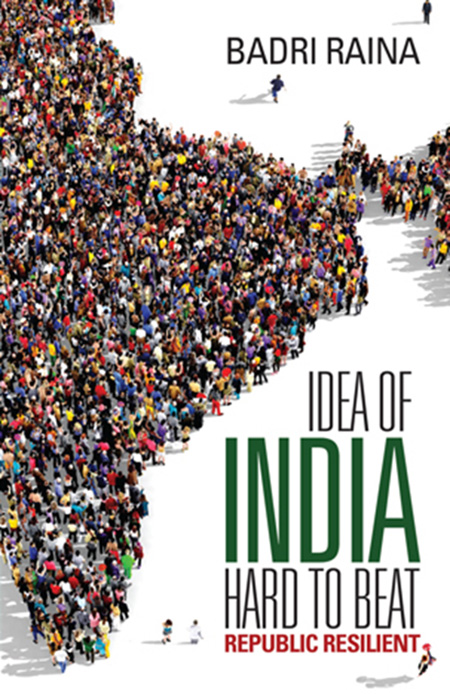The Indian economy is currently in bad shape, some would even say in a pretty perilous state, despite all the optimistic claims being made by government spokespersons, more of which will undoubtedly be made by Finance Minister Palaniappan Chidambaram when he presents his government's vote-on-account in lieu of an annual budget in the Lok Sabha on February 17.
The annual rate of growth of the country's gross domestic product shows no signs of rising above the 4.5-5 per cent mark. Investor confidence remains low.
Inflation, especially food prices, stubbornly refuses to slow down despite having risen by double digits for the better part of the last six years.
Despite contentions that economic growth in India has been "inclusive", expansion of employment opportunities remains sluggish.
Persistently high food inflation has sharpened and widened inequalities in an already highly-unequal society, exacerbating social tensions and adding to the anger and outrage of the proverbial person on the street, especially against brazen acts of corruption.
There is a widespread perception that the government's economic policies and programmes and the manner in which natural resources -- especially land, telecommunications spectrum, coal, iron ore and natural gas -- have been allotted (rather, mis-allocated) and valued (rather, under-valued), have all contributed to crony capitalism of the worst kind.
A year ago, the government claimed the economy would grow by five per cent in the financial year that ended on March 31. 2013. At that time, independent analysts had argued that the figure should be closer to 4.5 per cent. But their opinions were ignored.
On the last day of January, the Central Statistics Office finally came out with the actual figure. India's GDP had indeed grown by 4.5 per cent during 2012-13, the lowest in a decade.
Stock markets remain volatile and the rise or fall of indices are entirely dependent on the purchase and sale decisions of foreign institutional investors (FIIs). Over the last decade or so, domestic investors have literally run away from the country's bourses.
The sensitive index of the stock exchange at Mumbai had hit the 21,000 mark in January 2008; it touched the same level in November 2010 and again, over the last two months. But the Sensex simply refuses to remain above this level for too long.
Reserve Bank of India Governor Raghuram Rajan claims that the country is prepared for the "tapering" of bond purchases by the US Federal Reserve while also exhorting the American government to be mindful of the consequences of its actions on the rest of the world, including India.
Even if this country's economy is not that badly impacted by the US Fed's tapering of bond purchases that squeezes the flow of liquidity in the world monetary system, FIIs were clearly hoping that the tapering would not be as steep or front-loaded as it appears at present.
This clearly implies that stock indices will be adversely impacted and would remain volatile in the foreseeable future.
Finance Minister Chidambaram wants to contain the fiscal deficit at 4.8 per cent of GDP. For him, this is an article of faith, a red line which he does not want to cross under any circumstances.
The gross fiscal deficit of the Central government stood at 95.2 per cent of the budget estimate at the end of December 2013, against 78.8 per cent in the corresponding period of the previous year.
This means that the finance minister will do what he did last year, namely, try and stick to the fiscal deficit target by drastically cutting back on Plan expenditure. In February 2013, he reduced Plan expenditure from Rs 3,03,528 crore (budget estimate for 2012-13) to Rs 2,43,772 crore (revised estimate), or a massive cut of nearly Rs 60,000 crore.
It can be argued that this method of cutting Plan expenditure to adhere to a fiscal deficit target will not revive investor sentiments, even as it seeks to dampen medium-term inflationary expectations.
Further, the deficit target will probably be met by postponing payment of subsidies to oil companies and the fertiliser industry. This is an old government technique of "dressing up" its books of account.
The RBI governor surprised many when he hardened interest rates on January 28. If his predecessor, Duvvuri Subbarao, had done what he did, the pink dailies and neo-liberal commentators would have lit into him mercilessly for allegedly not being concerned about growth and investment in his zeal to curb inflation. Dr Rajan has received less flak since his honeymoon period is still not over.
Undoubtedly, the single biggest negative factor contributing to prevailing anti-incumbency sentiments has been the government's inability to check the rapid rise in the prices of a wide range of food items (and not just onions).
Even Chidambaram reluctantly conceded on December 24: "There is no easy solution to taming food inflation. There are no quick fixes to taming inflation. I am afraid it will take some time to contain this inflation. We are paying a political price for that and I acknowledge that but those are the facts..."
He would have done himself and his government better service if he displayed such contrite behaviour earlier. But public resentment over food inflation will not quickly subside. And the finance minister is absolutely right. The ruling dispensation led by our "world-renowned" economist prime minister will indeed pay a stiff political price for its failure to check inflation.
Members of the same industrial elite who have been the biggest beneficiaries of the policies of economic liberalisation over the last two decades and longer are, ironically, shouting the loudest about "policy paralysis". These are the same corporate captains who are rooting for Gujarat Chief Minister Narendra Modi who hopes to become the next prime minister of India.
The government is trying to expedite investment approvals with more than a little help from the new Minister for Environment and Forests M Veerappa Moily, who continues as minister for petroleum and natural gas.
A few new sops are probably in the offing, such as the one raising the number of subsidised cooking gas cylinders that can be obtained by a household in a year from nine to 12.
These new giveaways have come after the government chose to allow diesel prices to creep up in an election year, thus contributing hugely to across-the-board inflation.
The only silver lining in the dark clouds on the economic horizon is the Rs 61,000-plus crore that the government will earn as a one-time bonanza by auctioning second-generation telecom spectrum. (Which, incidentally, belies the "zero loss" claims made by those who turned a blind eye when the same spectrum was allocated in early-2008 on a first-come-first-served basis by the ministry of communications under the now-disgraced Andimuthu Raja.)
The finance minister may be right when he says the country's economy has the potential to grow by 8-9 per cent each year for the next few decades. But public memory is short. And the "stagflationary" depredations of the last few years will not be forgotten in a hurry.
The mess that will be inherited by the next government will not be easily sorted out.
Chidambaram will surely not be envious of his successor, given the current state of the Indian economy.


